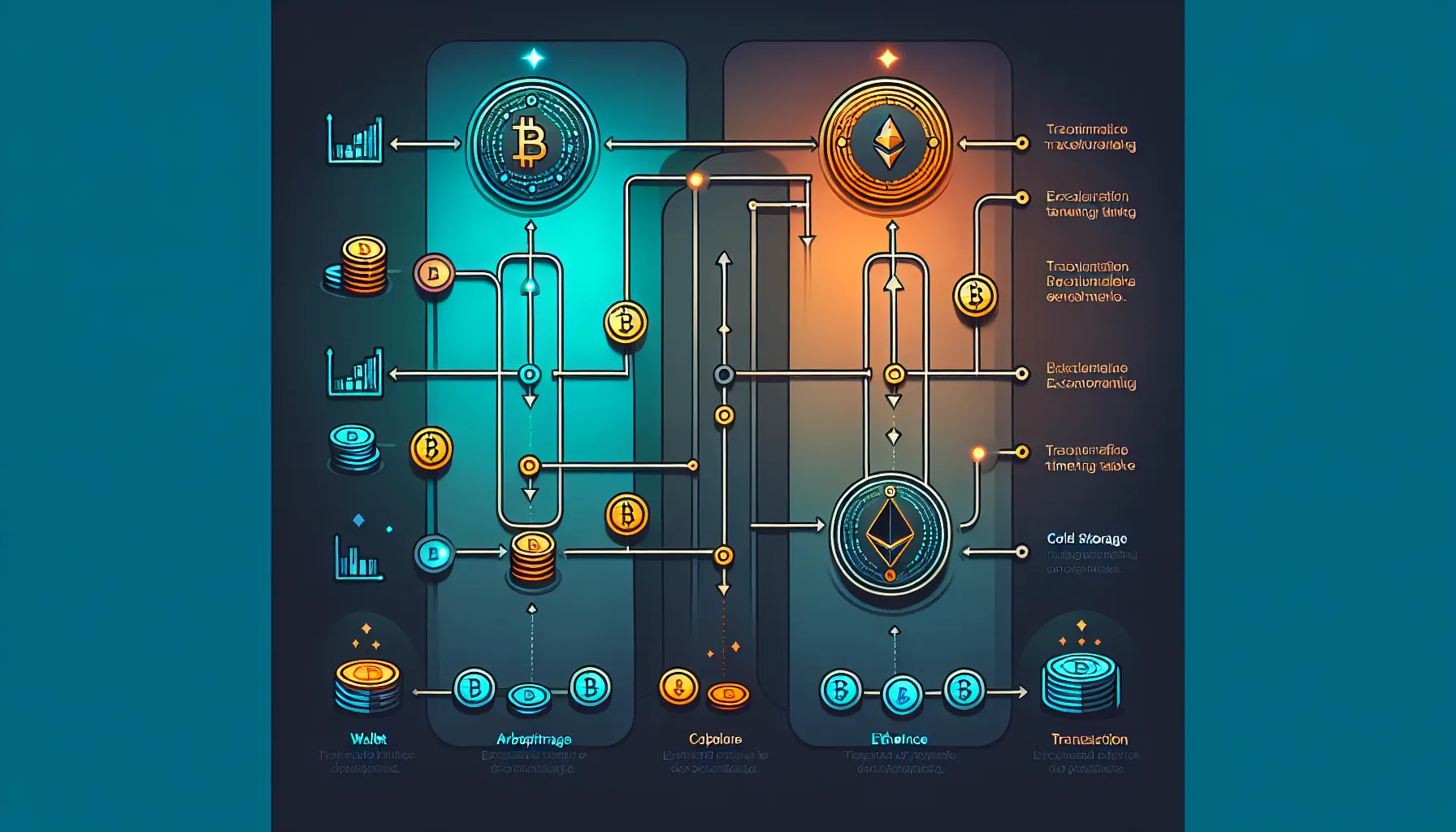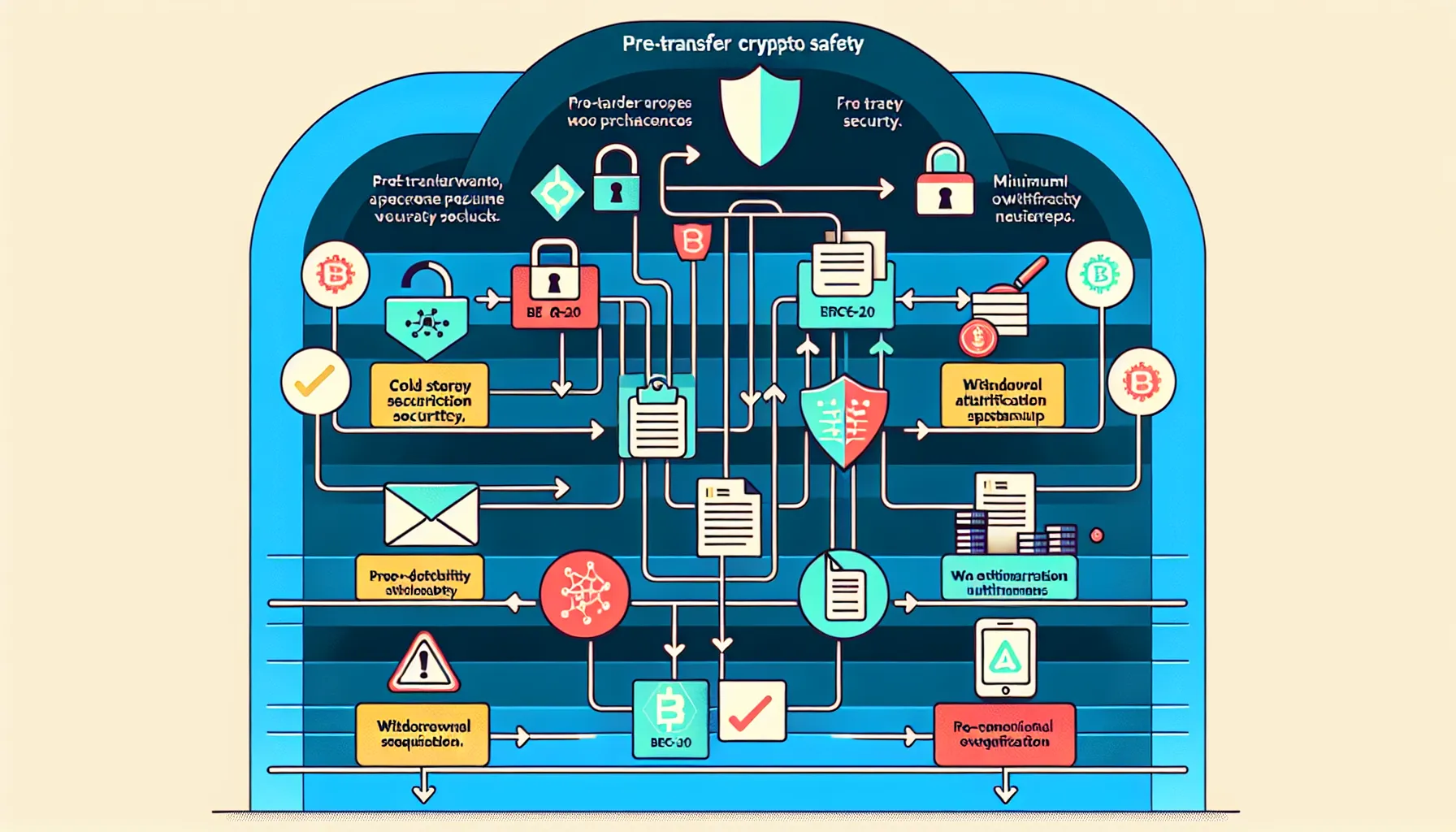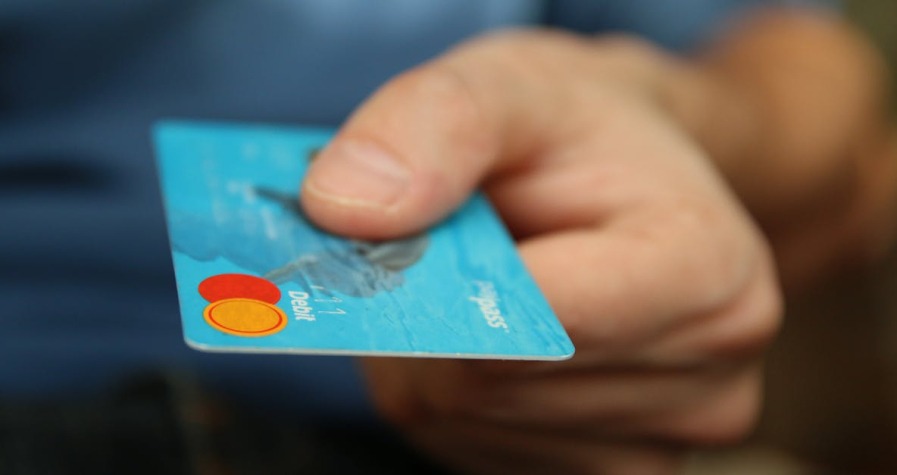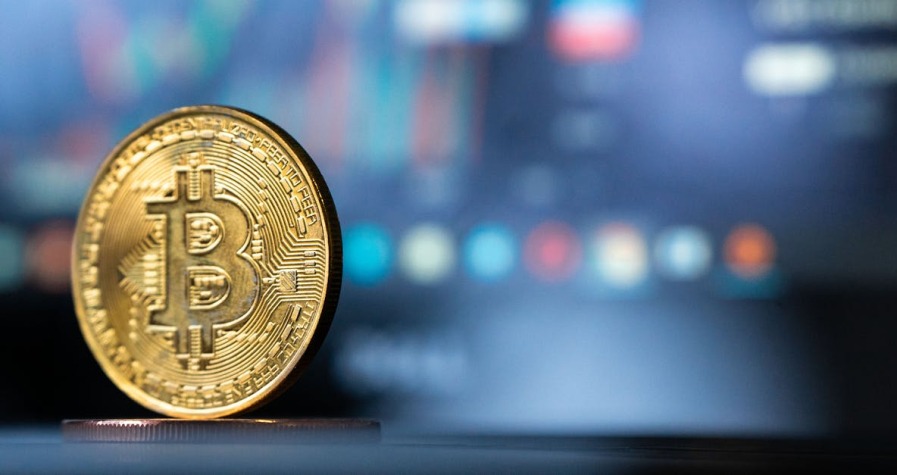Moving cryptocurrency between exchanges isn’t quite as simple as transferring money between bank accounts. One wrong character in a wallet address, a mismatched blockchain network, or a lapse in security can mean the permanent loss of digital assets, no customer service line can reverse a transaction on an immutable ledger. Yet for UK crypto investors looking to capitalise on better trading pairs, arbitrage opportunities, or superior security features, inter-exchange transfers are a necessary part of the game. The good news? With the right knowledge and a methodical approach, anyone can execute these transfers safely. This guide walks through the essential steps, security measures, and troubleshooting tips that ensure crypto moves between exchanges without incident, covering everything from network compatibility checks to recovery options when things go awry.
Key Takeaways
- Always verify network compatibility before initiating a transfer; sending crypto on the wrong blockchain network (e.g., ERC-20 vs BEP-20) can result in permanent loss of funds.
- Double-check wallet addresses character by character and execute a test transaction with a small amount before transferring larger sums between exchanges.
- Enable two-factor authentication (2FA) using an authenticator app rather than SMS to protect accounts during transfers and prevent unauthorised access.
- UK investors should prioritise FCA-registered exchanges to ensure compliance with anti-money laundering standards and benefit from enhanced consumer protections.
- Include required memo tags or destination tags for blockchains like Stellar and Ripple to ensure funds are correctly credited to your account.
- Learn how to transfer crypto between exchanges safely by following methodical preparation steps, verifying withdrawal requirements, and using blockchain explorers to monitor transaction progress.
Understanding the Basics of Crypto Transfers

At their core, crypto transfers involve moving digital assets, Bitcoin, Ethereum, or any number of altcoins, from one exchange’s wallet to another using blockchain technology. Unlike traditional financial systems where intermediaries validate and route payments, crypto transfers rely on decentralised networks that record every transaction on a public ledger. The sender initiates a transfer by entering the recipient’s wallet address and selecting the appropriate blockchain network: miners or validators then confirm the transaction, which typically takes anywhere from a few minutes to several hours depending on network congestion and the specific blockchain in use.
Each cryptocurrency operates on its native blockchain (Bitcoin on the Bitcoin network, Ether on Ethereum), though many tokens, particularly ERC-20 tokens, live on Ethereum’s infrastructure. Some assets can exist across multiple networks thanks to wrapped tokens or cross-chain bridges, adding another layer of complexity. Exchanges act as custodians, holding users’ crypto in hot wallets (online, accessible) or cold storage (offline, secure). When initiating a transfer, investors are effectively instructing the originating exchange to broadcast a transaction from its wallet to the deposit address provided by the destination exchange.
Why Transfer Crypto Between Exchanges?
Investors have several compelling reasons to shift assets from one platform to another. Access to diverse trading pairs tops the list, certain exchanges list niche altcoins or offer fiat on-ramps unavailable elsewhere. A UK trader might hold funds on a globally focused platform but need access to a local exchange that supports GBP deposits and withdrawals, or vice versa.
Arbitrage opportunities also drive transfers. Price discrepancies between exchanges can create profitable windows for traders who buy low on one platform and sell high on another. Speed matters here: successful arbitrage demands quick, reliable transfers before spreads narrow.
Security and compliance considerations play a major role, too. UK investors increasingly prioritise exchanges registered with the Financial Conduct Authority (FCA), which signals adherence to anti-money laundering standards and consumer protections. Moving assets from an unregulated offshore platform to an FCA-compliant exchange can offer peace of mind. Similarly, some investors diversify holdings across multiple exchanges to mitigate the risk of any single platform being hacked or going insolvent, distributing assets rather than keeping all eggs in one basket.
Finally, fee structures and platform features vary widely. One exchange might offer lower trading fees, advanced charting tools, or staking rewards that another lacks. Transferring funds to the platform best suited for a particular strategy can optimise both costs and returns.
Common Risks and How to Avoid Them
Even though their efficiency, crypto transfers carry risks that demand vigilance. Sending assets to the wrong address is perhaps the most feared mistake. Blockchain transactions are irreversible: if funds land in an address the sender doesn’t control, or worse, an address that doesn’t exist for that particular token, recovery is often impossible. A single typo can mean total loss.
Network incompatibility presents another pitfall. Exchanges may support the same token across multiple blockchain networks. For instance, USDT (Tether) can be sent via Ethereum (ERC-20), Binance Smart Chain (BEP-20), or Tron (TRC-20), among others. Sending USDT on the ERC-20 network to an exchange wallet expecting BEP-20 can result in lost funds, even though the token name is identical.
Phishing attacks and hacks remain pervasive threats. Scammers impersonate exchange support staff, send fake deposit addresses via email or social media, or create lookalike websites designed to harvest wallet credentials. Once an attacker gains access to an account or tricks a user into sending crypto to a fraudulent address, recourse is limited.
Human error extends beyond address mistakes, forgetting required memo tags (used by certain blockchains like Stellar or EOS to route transactions correctly) can leave funds in limbo, requiring manual recovery through customer support, if possible at all.
Avoiding these risks hinges on meticulous verification: always double-check addresses character by character, confirm network compatibility, and cross-reference information directly on the official exchange platform rather than relying on links from emails or messages. Using reputable, regulated exchanges with robust security infrastructure reduces exposure to platform-level hacks. Enabling two-factor authentication (2FA), maintaining strong unique passwords, and practising general security hygiene, such as avoiding public Wi-Fi during transfers and using hardware wallets for long-term storage, further fortify defences. A healthy dose of paranoia, it turns out, is a crypto investor’s best friend.
Essential Pre-Transfer Preparations

Preparation is half the battle when it comes to safe crypto transfers. Before initiating any transaction, investors should conduct due diligence on both the originating and destination exchanges. In the UK context, this means checking whether platforms are registered with the FCA for compliance with anti-money laundering regulations. While FCA registration doesn’t guarantee protection against all risks, it signals a baseline commitment to regulatory standards.
Beyond regulatory status, examine each exchange’s security features. Does the platform store the majority of user funds in cold storage, offline and out of reach from hackers? Is there insurance coverage for digital assets if a breach? Reviews, security audits, and the platform’s track record offer clues. A quick search for any past incidents, hacks, insolvencies, withdrawal freezes, can reveal red flags.
Update security settings on both accounts before proceeding. Enable or verify that two-factor authentication (2FA) is active, preferably using an authenticator app rather than SMS, which is vulnerable to SIM-swapping attacks. Set a strong, unique password for each exchange: reusing passwords across platforms is an invitation for credential-stuffing attacks. If the exchange offers withdrawal whitelists (restricting withdrawals to pre-approved addresses), consider enabling this feature for an added security layer.
Finally, take a moment to review recent account activity. Unexpected login attempts or unfamiliar devices accessing the account could indicate a compromise. Addressing security concerns before moving assets can prevent costly mistakes.
Verify Network Compatibility
Network compatibility is non-negotiable. Cryptocurrencies can exist on multiple blockchain networks, and exchanges don’t always support every variant. Before transferring, confirm that both the sending and receiving exchanges support the same network for the specific token.
For example, Ethereum-based tokens (ERC-20) must be sent to an Ethereum-compatible address, while Binance Smart Chain tokens (BEP-20) require a BSC address. Even though some tokens share the same name across networks, USDT, for instance, the underlying infrastructure differs. Sending an ERC-20 USDT to a wallet configured only for BEP-20 will result in lost funds, as the destination exchange won’t recognise or credit the deposit.
How to verify? Log into the destination exchange and navigate to the deposit page for the relevant token. The platform will display supported networks, often labelled as ERC-20, BEP-20, TRC-20, etc. Make a note of the correct network. Then, on the originating exchange’s withdrawal page, ensure the same network is selected before generating the transaction. If there’s any ambiguity, consult the exchange’s help documentation or contact support. A few minutes spent confirming compatibility can save hours of frustration, and potentially irrecoverable losses.
Check Withdrawal and Deposit Requirements
Each exchange imposes its own set of withdrawal and deposit requirements that can affect transaction success. Start by checking minimum withdrawal amounts on the originating platform. Attempting to send less than the minimum will either block the transaction or trigger an error. Similarly, confirm whether the destination exchange has a minimum deposit threshold: some platforms won’t credit deposits below a certain value.
Withdrawal fees vary significantly. Exchanges charge network fees to cover the cost of broadcasting transactions to the blockchain, and these fees fluctuate based on network congestion. High fees during peak times can eat into smaller transfers, making it worthwhile to wait for quieter periods if the transfer isn’t urgent. Some exchanges impose additional platform fees on top of network costs, so compare the total fee structure before proceeding.
Certain blockchains, Stellar (XLM), EOS, and Ripple (XRP), among others, require a memo or destination tag plus to the wallet address. This alphanumeric string helps the exchange route the incoming deposit to the correct user account. Forgetting to include the memo can result in funds arriving but not being credited to the account, necessitating manual recovery through customer support (a process that can take days or weeks). Always check the destination exchange’s deposit instructions for any special requirements and include them exactly as specified.
Finally, be aware of withdrawal limits tied to account verification levels. Exchanges often tier limits based on KYC (Know Your Customer) status: unverified or basic accounts may face daily or monthly caps that restrict large transfers. If planning a significant move, ensure the account’s verification level permits it, upgrading if necessary well in advance of the transfer.
Step-by-Step Guide to Transferring Crypto Safely
With preparations complete, it’s time to execute the transfer. Following a structured, step-by-step approach minimises the risk of costly errors and ensures funds arrive safely.
Obtain the Correct Deposit Address
Begin by logging into the destination exchange, the platform where the crypto will be received. Navigate to the deposit or wallet section and select the specific cryptocurrency to be transferred. The exchange will generate a deposit address, a long string of alphanumeric characters unique to that account and token.
Copy the address carefully. Most platforms provide a “copy” button to avoid manual transcription errors: use it. If a memo or destination tag is required, copy that separately and label it clearly to avoid confusion. Some exchanges display a QR code representing the address, which can be scanned if transferring from a mobile wallet, though for exchange-to-exchange moves, text addresses are standard.
Double-check that the address corresponds to the correct network. If the token supports multiple blockchains, the exchange will typically allow selection of the preferred network before displaying the address. Confirm the choice matches the network the originating exchange will use for withdrawal.
Do not rely on previously saved addresses if any time has passed: exchanges occasionally rotate deposit addresses or update wallet infrastructure. Always obtain a fresh address immediately before initiating a transfer.
Double-Check All Transfer Details
Before hitting “send,” a thorough review of all details is essential. Even seasoned crypto users fall victim to avoidable mistakes when rushing.
Verify the recipient address character by character. While it’s impractical to read every digit of a 42-character Ethereum address aloud, at minimum check the first four and last four characters. Some users take screenshots of both the copied address and the destination exchange’s displayed address, comparing them side by side.
Confirm the token type. It sounds obvious, but in the bustle of managing multiple assets, it’s possible to select the wrong cryptocurrency from a dropdown menu. Sending Bitcoin to an Ethereum address, for example, will result in permanent loss.
Recheck the network selection. This is where most errors occur. If the destination exchange expects deposits via Binance Smart Chain (BEP-20) but the originating platform is set to send via Ethereum (ERC-20), the funds will vanish into the ether, sometimes literally.
If a memo or tag is required, ensure it’s included exactly as specified, with no extra spaces or characters. A single typo can send funds into a black hole.
Finally, review the amount and fees. Confirm that after deducting network and platform fees, the amount arriving at the destination will meet any minimum deposit requirements. Nothing’s more frustrating than a transfer completing successfully but not being credited because it fell a fraction short.
Execute a Test Transaction First
One of the smartest habits any crypto investor can adopt is the test transaction. Before moving the full balance, send a small amount, just enough to confirm the process works end to end. If transferring £1,000 worth of Ethereum, start with £20 or £50.
Initiate the test transfer following the same steps outlined above, then monitor its progress. Most blockchains provide transaction explorers (Etherscan for Ethereum, Blockchain.com for Bitcoin, BscScan for Binance Smart Chain, etc.) where you can paste the transaction hash (provided by the originating exchange upon withdrawal) to track confirmations in real time.
Once the test deposit appears in the destination exchange’s wallet, credited and available, the full transfer can proceed with confidence. Yes, this approach incurs an extra transaction fee, but weighed against the risk of losing a significant sum to an address or network error, the cost is negligible. Consider it an insurance premium.
There’s a psychological benefit, too. Seeing the test transaction succeed provides reassurance and reduces the anxiety that accompanies larger moves. Crypto transfers are irreversible: a cautious, methodical approach is worth the minor inconvenience.
Complete the Full Transfer
With the test transaction successfully credited, it’s time to move the remaining balance. Return to the originating exchange and initiate a new withdrawal, using the same address, network, and memo (if applicable) as the test. Re-verify these details even though they were confirmed moments ago, paranoia pays in crypto.
Enter the desired amount, accounting for withdrawal fees. Some users prefer to withdraw the maximum available balance to avoid leaving dust (tiny, unusable amounts) behind, though this depends on individual strategy and whether the originating exchange will continue to be used.
Submit the transaction and save the transaction hash or confirmation number. This identifier is crucial for tracking the transfer and resolving any issues that arise.
Monitor progress using the blockchain explorer. Depending on the network, confirmation times vary, Bitcoin can take 10 to 60 minutes, Ethereum typically 5 to 15 minutes (though network congestion can extend this), while faster blockchains like Binance Smart Chain or Solana may confirm within seconds.
Once the transaction accumulates the required number of confirmations (set by the destination exchange, often 12 for Bitcoin, 20 for Ethereum), the funds will be credited to the account. At this point, the transfer is complete. It’s wise to log in and verify that the balance reflects the expected amount before considering the job done.
Security Best Practices During Transfers
Security doesn’t stop once the transfer is initiated. Several practices can further safeguard assets during the process and reduce the attack surface for bad actors.
Enable Two-Factor Authentication
Two-factor authentication (2FA) is the single most effective security measure an investor can carry out, yet it’s often overlooked or improperly configured. 2FA requires a second form of verification, typically a time-based one-time password (TOTP) generated by an authenticator app like Google Authenticator, Authy, or Microsoft Authenticator, plus to the account password.
Without 2FA, a compromised password grants an attacker full access to an exchange account, enabling them to withdraw funds, change settings, or lock out the legitimate owner. With 2FA enabled, even if a password is stolen through phishing or a data breach, the attacker cannot proceed without the second factor.
Enable 2FA on both the originating and destination exchanges before initiating any transfer. Prefer authenticator apps over SMS-based 2FA: while SMS is better than nothing, it’s vulnerable to SIM-swapping attacks where a malicious actor convinces a mobile carrier to transfer a victim’s phone number to a new SIM card under their control.
Some exchanges support hardware security keys (like YubiKey) as a 2FA method, offering even stronger protection. For investors managing significant sums, the investment in a hardware key is worthwhile.
Backup 2FA recovery codes when setting up authentication. Exchanges typically provide a set of one-time-use codes during 2FA setup: store these securely offline. Losing access to the authenticator app without backup codes can result in being locked out of the account, requiring a lengthy identity verification process to regain access.
Finally, review authorised devices and active sessions regularly. Most exchanges display a list of devices and IP addresses that have logged into the account. If anything looks unfamiliar, an IP from a different country, a device you don’t recognise, terminate the session immediately and change the password.
Use Whitelisted Addresses When Available
Many exchanges offer an optional but powerful security feature: address whitelisting (sometimes called withdrawal address management). When enabled, withdrawals are restricted to a pre-approved list of addresses. Any attempt to send crypto to a non-whitelisted address will be blocked, even if an attacker gains access to the account.
Setting up whitelisting involves navigating to the exchange’s security settings and adding the destination wallet addresses you plan to use. There’s often a confirmation period, ranging from 24 to 48 hours, before a newly added address becomes active, designed to give the account owner time to notice and cancel any unauthorised additions.
Whitelisting is particularly valuable for investors who transfer funds regularly between a fixed set of exchanges or wallets. It’s an additional hurdle for attackers: even with a stolen password and 2FA code (perhaps obtained through sophisticated phishing), they cannot withdraw funds to their own address if it’s not whitelisted.
The trade-off is reduced flexibility. If an investor suddenly needs to send crypto to a new address, say, a different exchange or a peer-to-peer buyer, they must wait for the whitelisting confirmation period to pass. For many, this delay is a small price to pay for the added security, especially when managing larger portfolios.
Not all exchanges support whitelisting, and the feature must typically be enabled manually. Check the security settings on each platform used and activate whitelisting wherever available. For addresses that will be used repeatedly, such as a personal hardware wallet or a frequently accessed secondary exchange, add them to the whitelist proactively, even before an immediate need arises.
Troubleshooting Common Transfer Issues
Even though best efforts, issues occasionally arise during crypto transfers. Knowing how to troubleshoot common problems can save time, stress, and sometimes even funds.
What to Do If Your Transfer Is Delayed
Delayed transfers are amongst the most common concerns, and they’re not always cause for alarm. Blockchain networks experience variable congestion: during periods of high activity, transactions can take significantly longer than usual to confirm. Bitcoin, for instance, might see confirmation times stretch from 10 minutes to several hours when the mempool (the queue of pending transactions) is crowded.
First, check the transaction status using a blockchain explorer. Enter the transaction hash (provided by the originating exchange) into the appropriate explorer, Etherscan for Ethereum, Blockchain.com for Bitcoin, BscScan for Binance Smart Chain, etc. The explorer will show whether the transaction has been broadcast to the network, how many confirmations it has received, and its current status.
If the transaction shows as pending with zero confirmations, it’s waiting in the mempool. Depending on the fee paid, it may take longer to be picked up by miners or validators. Some blockchains allow fee bumping (increasing the transaction fee to prioritise processing), though this is typically not an option for exchange-initiated transfers. Patience is often the only recourse.
If the transaction has multiple confirmations but hasn’t been credited to the destination exchange, the delay may be on the receiving platform’s side. Exchanges set their own confirmation requirements (e.g., 12 confirmations for Bitcoin, 20 for Ethereum) before crediting deposits. Check the exchange’s deposit policy to see how many confirmations are needed and compare that to the explorer’s data. If the required threshold has been met but the funds still don’t appear, contact the destination exchange’s support with the transaction hash.
In rare cases, a transaction may show as failed or dropped from the mempool. This can happen if the network fee was set too low and miners ignored the transaction for an extended period. On some blockchains, unconfirmed transactions eventually expire and funds return to the originating wallet. If this occurs, check the originating exchange’s wallet balance and consider re-initiating the transfer with a higher fee.
Always keep records of transaction hashes, screenshots, and timestamps. If escalation to customer support is necessary, this documentation will expedite resolution.
How to Recover from Address Entry Errors
Address entry errors are the nightmare scenario, and the hard truth is that most are irreversible. Blockchain transactions, once confirmed, cannot be undone. If crypto is sent to an incorrect address, particularly one that exists but isn’t controlled by the sender or recipient, recovery is functionally impossible.
But, there are a few circumstances where recovery might be feasible:
- Internal exchange wallets: If the incorrect address belongs to another user’s account on the same exchange (i.e., the deposit and withdrawal both occurred within the same platform), the exchange may be able to help recovery. Contact customer support immediately with full transaction details. Resolution is not guaranteed and often depends on the cooperation of the unintended recipient and the exchange’s policies.
- Incorrect network, correct address: If crypto was sent on the wrong blockchain network but the address is still controlled by the sender or recipient (e.g., sending ERC-20 tokens to a BEP-20 address, but both addresses are linked to the same wallet), recovery tools or manual intervention might retrieve the funds. This is highly technical and may require engaging the destination exchange’s support or using blockchain recovery services. Success rates vary.
- Unconfirmed transactions: If an error is caught immediately, before miners confirm the transaction, there’s a slim chance to attempt a double-spend (broadcasting a new transaction with the same inputs to a correct address, with a higher fee). This is not supported by exchanges and is unreliable: most exchanges broadcast transactions that confirm quickly, leaving no window for intervention.
For addresses that don’t exist or are invalid, the blockchain typically rejects the transaction outright, and funds remain in the originating wallet. Modern exchanges validate address formats before allowing withdrawal, reducing the risk of this particular error.
The bottom line: prevention is the only reliable strategy. There is no customer service hotline to reverse a blockchain transaction. Use test transfers, double-check every detail, and never rush. The few extra minutes spent verifying can prevent irreversible losses.
Conclusion
Transferring cryptocurrency between exchanges is a routine necessity for active investors, but it’s one that demands respect for the underlying technology and its unforgiving nature. Unlike traditional finance, where errors can often be rectified with a phone call, crypto’s decentralised, irreversible transactions leave no room for carelessness. Yet with the right approach, methodical preparation, rigorous verification, and layered security, these transfers become manageable, even routine.
The fundamentals are straightforward: understand the networks involved, verify compatibility, double-check every detail, and always test before committing large sums. Security measures like two-factor authentication and address whitelisting aren’t optional extras: they’re essential safeguards in an ecosystem where threats are persistent and sophisticated. And when issues arise, a calm, informed response, tracking transactions via blockchain explorers, consulting exchange support with documentation in hand, can often resolve what initially seems catastrophic.
For UK investors, the added consideration of FCA regulation and compliance brings both assurance and responsibility. Prioritising reputable, regulated platforms reduces risk, though no exchange is entirely immune to technical hiccups or security incidents. Diversifying holdings across multiple platforms and maintaining personal security hygiene remain vital.
Crypto transfers don’t have to be nerve-wracking. Armed with knowledge, patience, and a healthy dose of caution, anyone can move digital assets safely and confidently, turning what might seem like a high-wire act into just another part of a well-managed investment strategy.
Frequently Asked Questions
How do I transfer crypto between exchanges safely?
Always verify the deposit address and network compatibility, enable two-factor authentication, and conduct a small test transaction first. Double-check all details including memo tags if required, and use blockchain explorers to track confirmations before transferring larger amounts.
What happens if I send crypto to the wrong address?
Blockchain transactions are irreversible, so sending crypto to an incorrect address typically results in permanent loss. If the error occurred within the same exchange between internal wallets, contact customer support immediately, though recovery is not guaranteed.
Why is network compatibility important when transferring cryptocurrency?
Tokens can exist on multiple blockchain networks (ERC-20, BEP-20, TRC-20). Sending crypto on one network to a wallet configured for another results in lost funds. Always verify both exchanges support the same network for your specific token.
How long does a crypto transfer between exchanges take?
Transfer times vary by blockchain and network congestion. Bitcoin typically takes 10–60 minutes, Ethereum 5–15 minutes, whilst faster networks like Binance Smart Chain confirm within seconds. Exchanges also require multiple confirmations before crediting deposits.
Are crypto exchanges in the UK regulated?
UK crypto exchanges must register with the Financial Conduct Authority (FCA) and comply with anti-money laundering regulations. Whilst FCA registration signals regulatory compliance, it doesn’t guarantee protection against all risks like hacks or insolvency.
What is a memo tag and when do I need one?
A memo or destination tag is an alphanumeric code required by certain blockchains like Stellar, EOS, and Ripple to route deposits correctly. Forgetting to include it can result in funds arriving but not being credited to your account.






